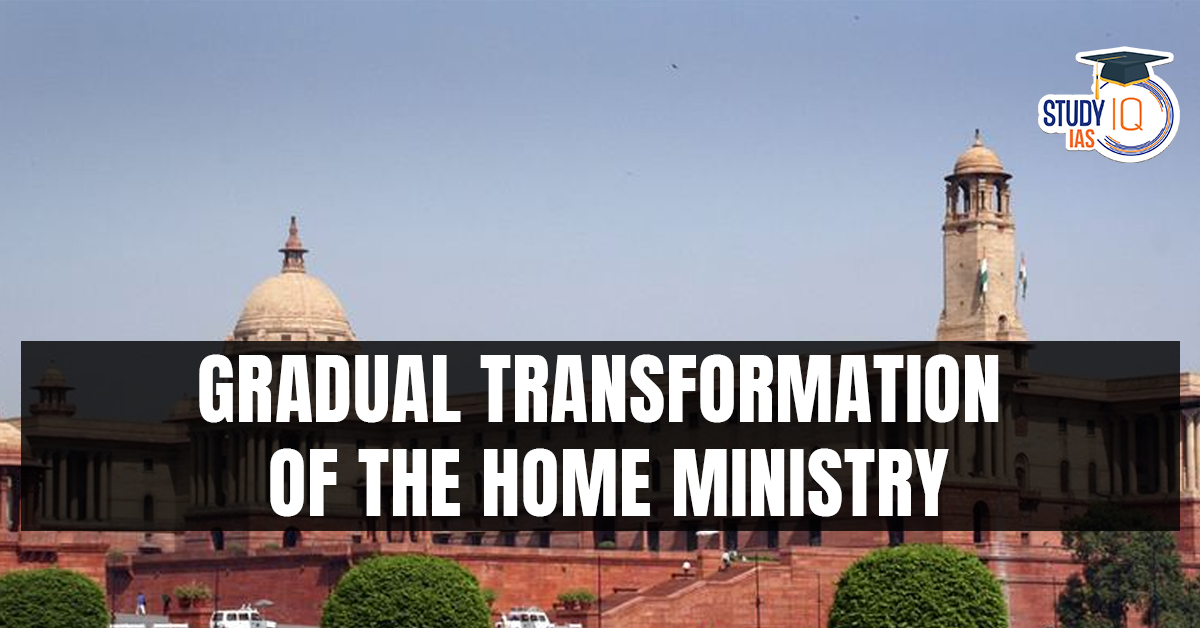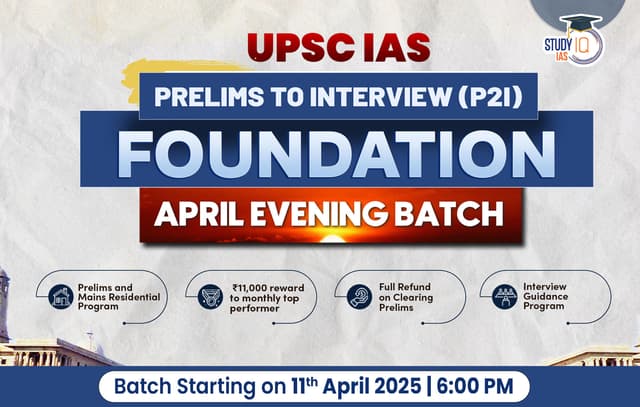Table of Contents
Context: The Ministry of Home Affairs (MHA) has seen various gradual transformations over the years.
Background Of The Ministry of Home Affairs (MHA)
Focus on Hotspots Only
- For decades, violence in Kashmir, insurgency in the Northeast, and Naxalite movements in Central India dictated the Ministry’s priorities.
- This resulted in significant loss of life and extensive deployment of the Central Armed Police Forces (CAPFs) due to states’ inability to modernize their police forces.
Reactive (Event-Driven) Legislation
Laws were made in response to specific incidents:
- Terrorist and Disruptive Activities (Prevention) Act (TADA) after the Punjab insurgency.
- Prevention of Terrorism Act (POTA) after the 2001 Parliament attack.
- National Investigation Agency (NIA) was formed after the 26/11 Mumbai attacks.
Leadership Instability
- Frequent changes in leadership, particularly during Indira Gandhi’s third term and Rajiv Gandhi’s tenure, led to instability in internal security reforms.
- This instability hindered the implementation of long-term strategies, as seen with multiple Home Ministers during their tenures.
Crisis Management Frameworks
- While the Ministry of Home Affairs (MHA) was involved in crisis management, broader frameworks for disaster management were developed later.
- The National Disaster Management Act of 2005 led to the establishment of the National Disaster Management Authority (NDMA) and the National Crisis Management Committee (NCMC), which aimed to provide a more coordinated and proactive approach to disaster management.
Evolution Towards Proactive Measures: Key Reforms Undertaken
Legislative Reforms
- Passage of three new criminal laws: Bharatiya Nyaya Sanhita, Bharatiya Nagarik Suraksha Sanhita, and Bharatiya Sakshya Adhiniyam in 2023.
- Amendments to the NIA Act and UAPA to define terrorism in Indian law and financially choke terror groups.
- Over 27 legislative reforms since 2019 to establish strong security jurisprudence.
Institutional Modernization
Establishment of the National Forensic Sciences University (NFSU).
- Full implementation of the Crime and Criminal Tracking Network and Systems (CCTNS), integrating police stations, courts, jails, and forensic labs.
- Revamping intelligence-sharing mechanisms like the Multi-Agency Centre (MAC).
Budgetary Expansion
- The Home Ministry budget crossed ₹1 lakh crore in 2019 and surged to ₹2.33 lakh crore in 2025.
- Enhanced expenditure on Central Paramilitary Forces from ₹38,000 crore in 2013-14 to ₹97,000 crore in 2024-25.
Focus on Technology and Coordination
- Creation of technology databases for intelligence.
- Promotion of a “duty to share” culture among agencies.
Conflict Resolution
- Dilution of Article 370 for Kashmir integration.
- Peace accords in the North-East.
- Dual strategies combining security measures with development initiatives in Naxal-affected areas
Impact on the Ground
Reduction in Violence
Violence across Kashmir, Northeast, and Naxal areas has declined by 70%.
- Stone-pelting incidents in Kashmir have reduced substantially.
- Insurgency in the North-East has weakened.
Integration and Stability
- Political stability and economic growth are evident in previously conflict-prone regions.
- Social transformation is visible in Naxal strongholds due to development initiatives.
Enhanced Governance
- Improved coordination between states and the Centre through Articles 355 and 356 of the Constitution.
- Strengthened federal governance structures integrating security with administrative functions
What are the Various Challenges Related To Ministry of Home Affairs (MHA)
Governance Challenges
Ethnic Violence and Regional Instabilities: Manipur ethnic violence has exposed limitations in the MHA’s ability to curb unrest despite central intervention.
- Critics argue that the tussle between state and central powers has further complicated governance.
Sikh Militancy and International Relations: The resurgence of Sikh militancy, particularly linked to pro-Khalistan groups abroad, has strained India’s relations with countries like Canada. Intelligence agencies have flagged concerns about radicalism and secessionist movements in Punjab.
Legislative and Policy Concerns
Hasty Drafting of Laws: Critics have pointed out that legislative enactments often lack thorough scrutiny and stakeholder consultations, leading to implementation challenges.
- Eg., the Gram Nyayalaya Act failed to adequately address operational issues such as financial implications or its impact on reducing judicial pendency.
Pre-Legislative Scrutiny: A lack of pre-legislative scrutiny has been flagged as a recurring issue, with calls for wider consultations and cost-benefit analyses before enacting laws.
- This gap undermines the effectiveness and adaptability of new legislation.
What are the Current Challenges Associated With Ministry of Home Affairs (MHA)
Restoring Peace in Jammu & Kashmir
- Despite reduced terror in recent years, fresh attacks in Poonch and Reasi districts have raised alarms.
- The Amarnath Yatra needs foolproof security.
Unresolved Ethnic Violence in Manipur
- Violence between communities is ongoing and spreading to new areas like Jiribam.
- State-centre coordination is strained, and stolen weapons are yet to be recovered.
Resurfacing of Sikh Militancy
- Pro-Khalistan elements gaining visibility — both in India and abroad, especially in Canada.
- Two radical Sikh leaders won Lok Sabha seats — showing growing support for hardliners.
Implementing New Criminal Justice Laws
- The Bharatiya Nyaya Sanhita, Bharatiya Nagarik Suraksha Sanhita, and Bharatiya Sakshya Adhiniyam kick in from July 1, 2025.
- These laws are technology-driven, but many states lack trained personnel and digital readiness.
Sino-India Border Tensions
- Despite military-level talks, the border dispute with China is unresolved.
- Ministry of Home Affairs (MHA) must ensure internal preparedness, especially in border areas like Ladakh and Arunachal Pradesh.
Ending Maoist Violence
- Violence is down 70%, but the job isn’t over.
- The Home Minister has promised a Maoist-free India in 3 years — needs smart operations, local support, and development.
Concluding the Naga Peace Accord
- Other peace accords in the Northeast have worked, but Naga talks remain stuck.
Way Forward
- Strengthen intelligence-sharing and surveillance in vulnerable regions.
- Promote inclusive dialogue to address ethnic and regional unrest.
- Implement new laws with proper training and infrastructure support.
- Link internal security efforts with local development initiatives.


 Governor's Assent to State Laws and Bill...
Governor's Assent to State Laws and Bill...
 Strengthening Enforcement of Judicial Or...
Strengthening Enforcement of Judicial Or...
 Delimitation: Issues, Legal and Constitu...
Delimitation: Issues, Legal and Constitu...





















